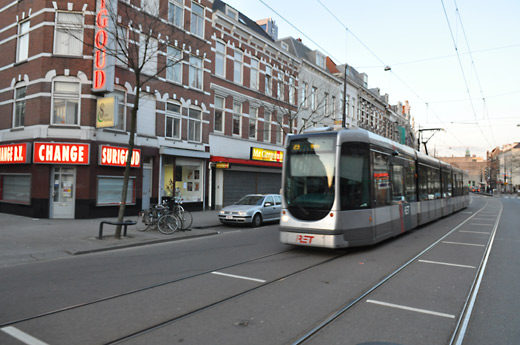
A proposed revision of the City of Cincinnati's
Zoning Code would add an allowable reduction of parking for residential buildings located within approximately two blocks of a streetcar stop. Presently, the City's Zoning Code has similar reduced parking options for properties with close proximity to public parking facilities, housing for the elderly and persons with disabilities, and on development sites with multiple uses.
The proposal would allow for the Director of Buildings & Inspections to grant a 50% reduction in the number of required parking spaces for any "permanent residential" use located within 800 feet of a streetcar stop. For residential buildings where a 50% reduction equates to less than five required spaces, no spaces will need to be provided.
The proposal comes just as the Cincinnati Streetcar project has
secured $86.5 million of the total $128 million needed to complete a modern system running from Cincinnati's riverfront through its center city and to nearby Uptown neighborhoods. City leaders are still banking on significant federal money to close the financing gap and make the project a reality.
In February, Cincinnati leaders learned that they had
missed out on the first round of TIGER funds in part due to the lack of complimentary zoning policies - policies such as the proposed parking reduction amendment that would encourage mixed-use and transit-oriented development along the proposed route. Beyond the proposal's impact on the
Cincinnati Streetcar project, preservationists are encouraged by what it could mean for historic neighborhoods like Over-the-Rhine.
"In general, parking is the enemy of historic preservation because developers of historic properties are required to provide a lot of off-street parking," explained Danny Klingler, Director,
OTR ADOPT. "This leads to demolition of other buildings to make room for surface parking lots. So we end up de-densifying our urban communities so that we can park cars, instead of walking and using public transit."
The zoning amendment must go before the City Administration, then back to Planning Commission and eventually on to the full City Council before becoming reality. Supporters of the amendment hope to have the proposed changes in put before City Council later this year.
Writer:
Randy A. SimesPhotography by Scott BeselerStay connected by following Randy on Twitter
@UrbanCincy
Enjoy this story?
Sign up for free solutions-based reporting in your inbox each week.